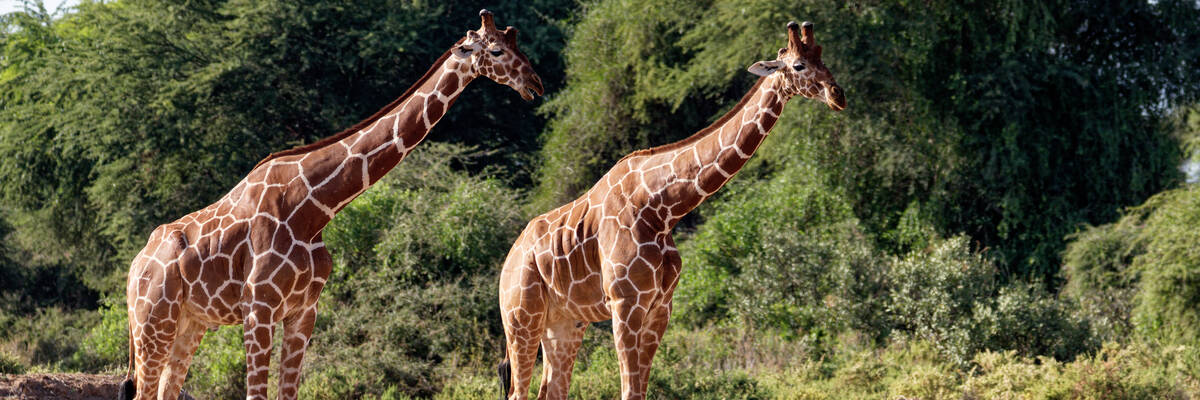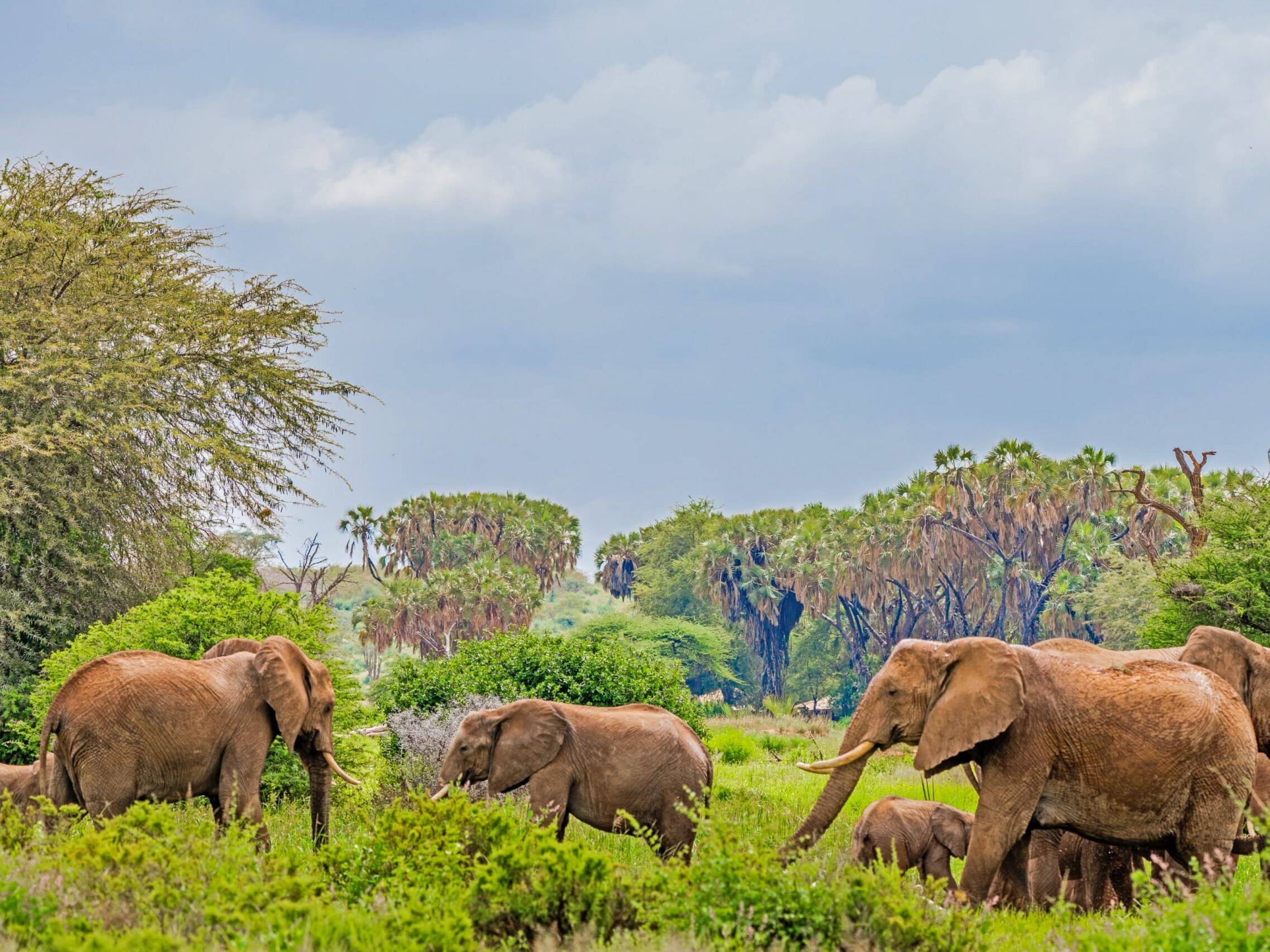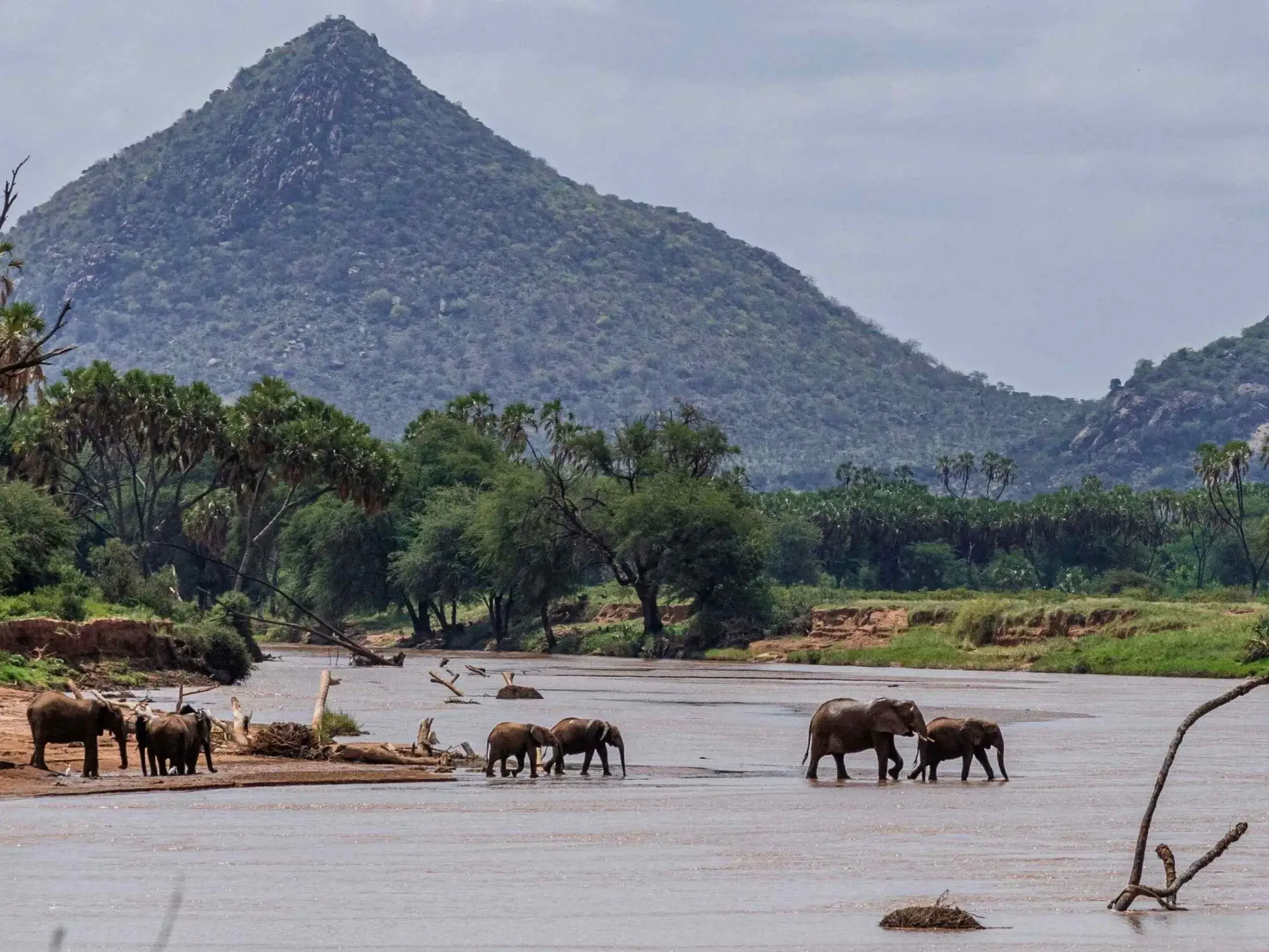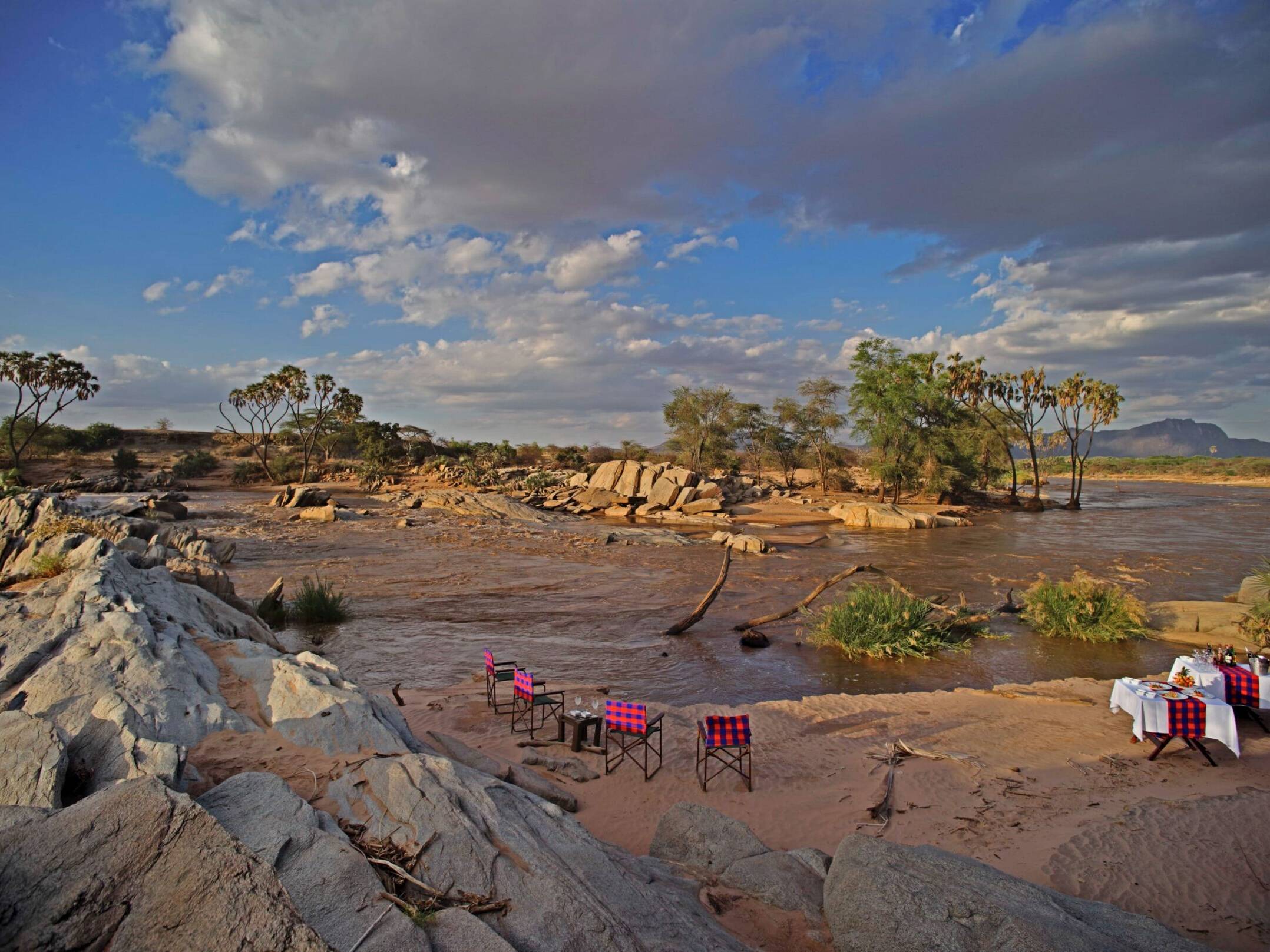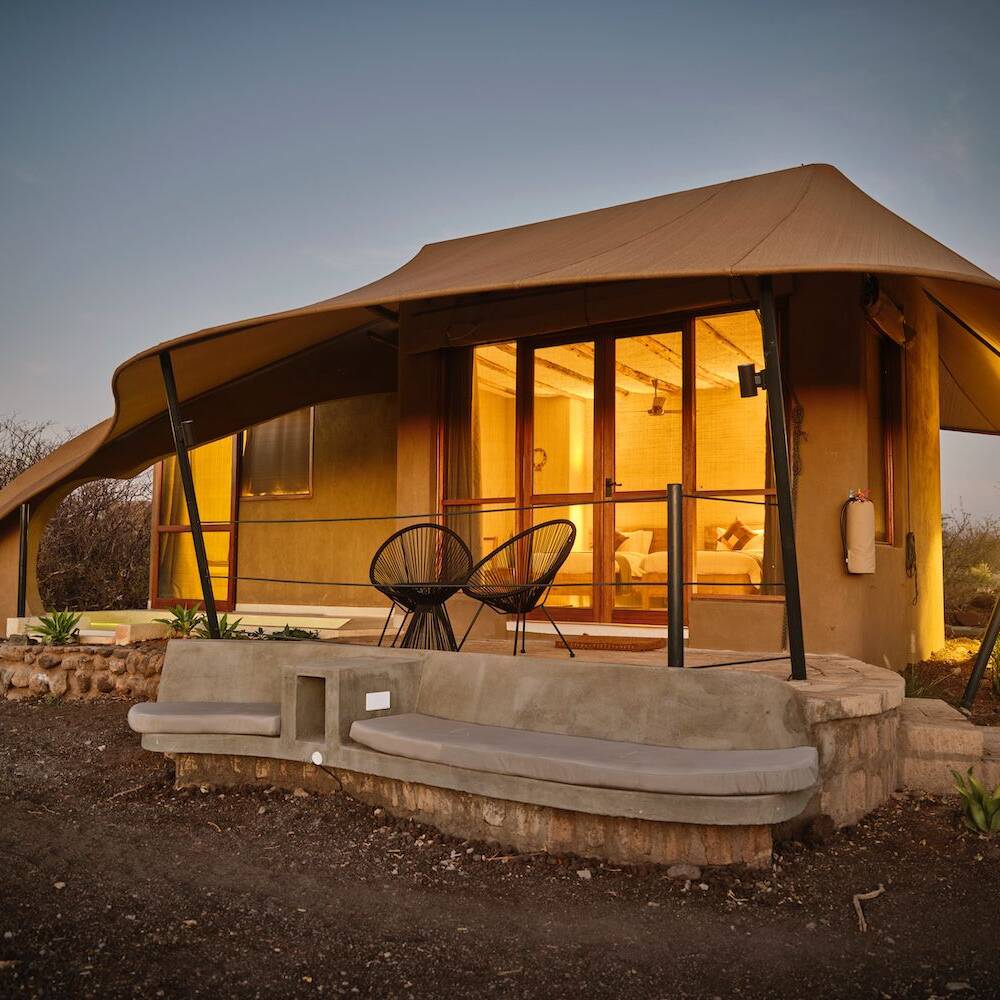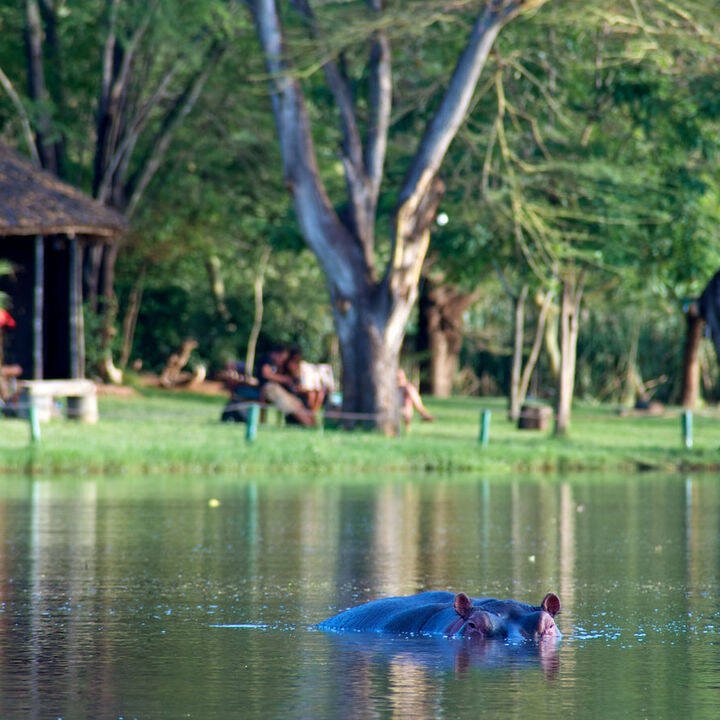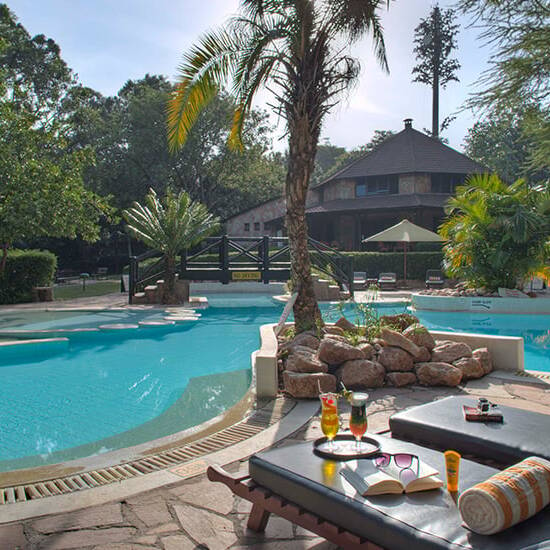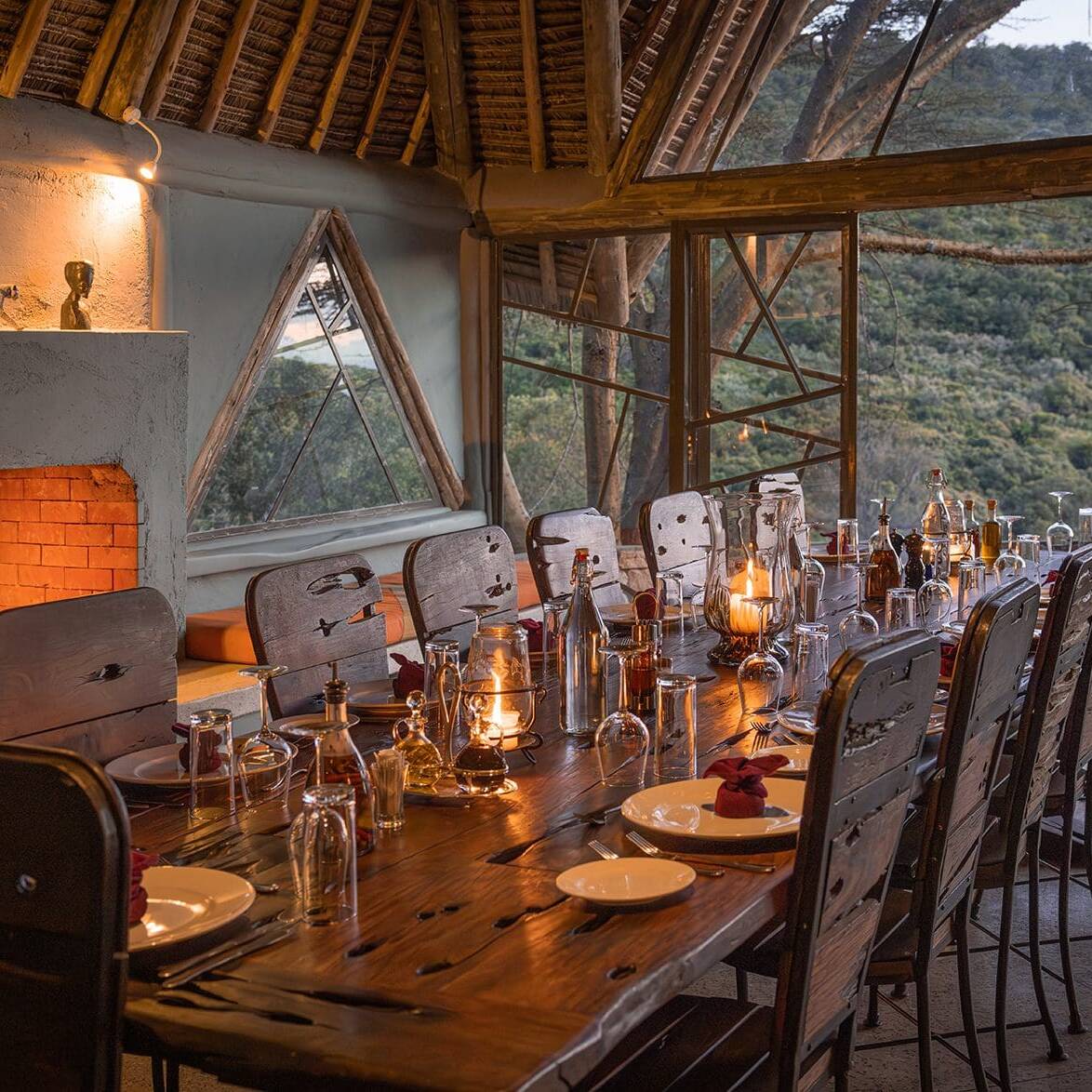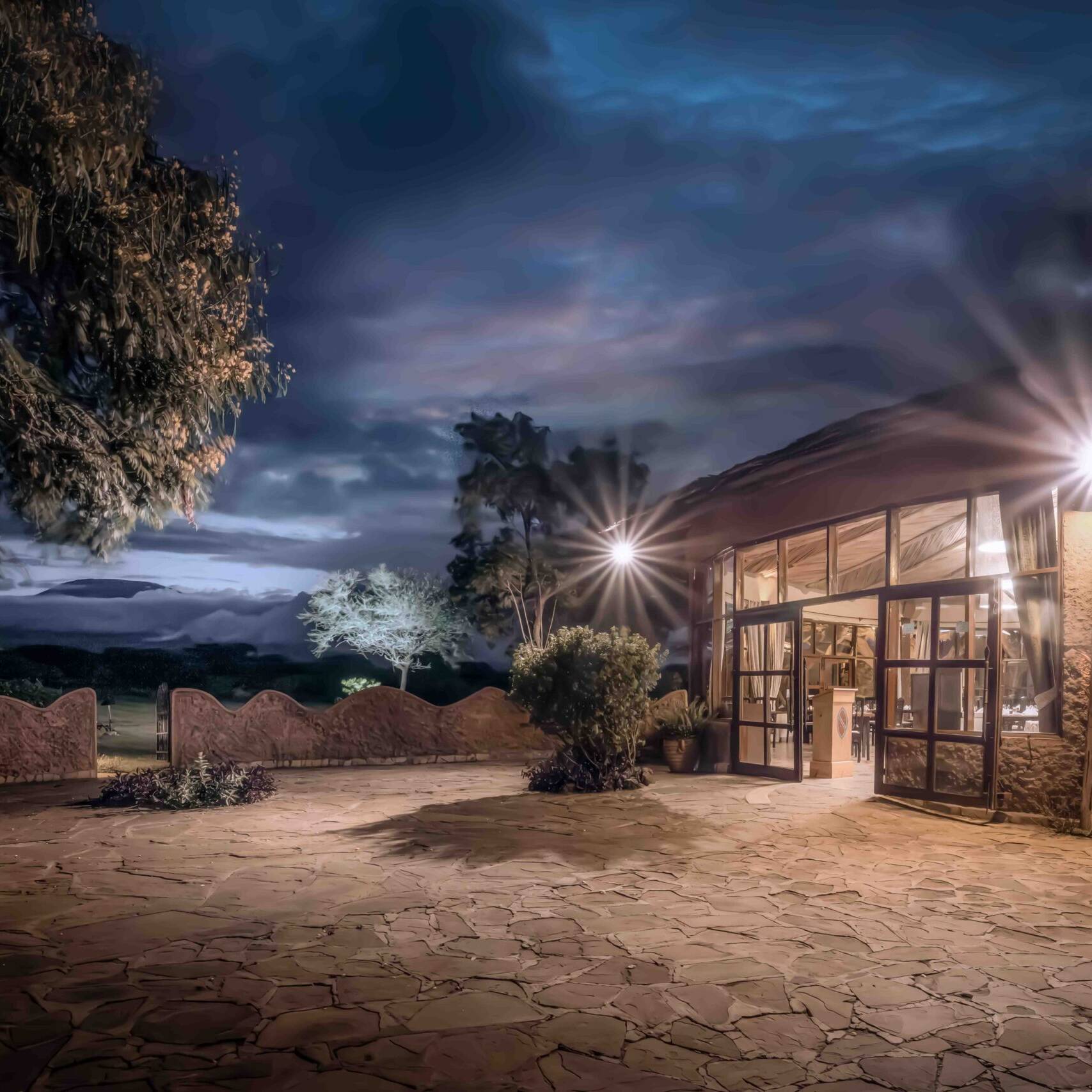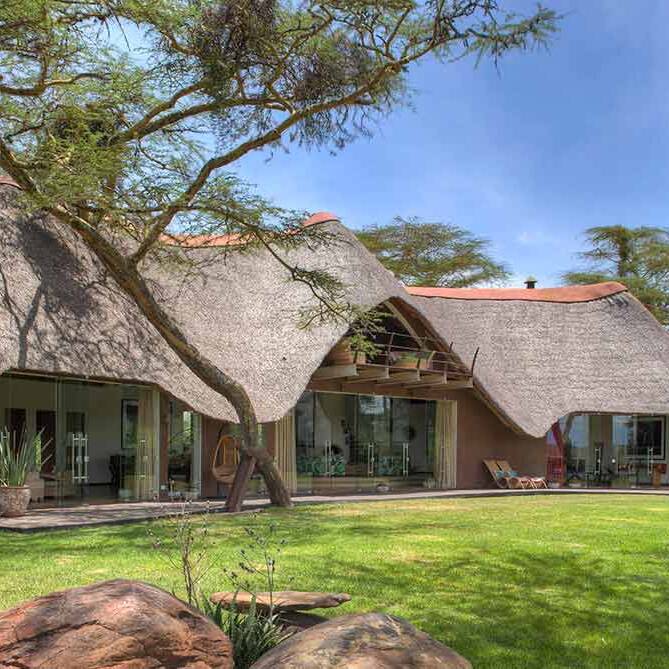Samburu National Reserve, located in northern Kenya and spanning roughly 165 square kilometers, sits adjacent to both Buffalo Springs and Shaba Reserves. Samburu holds strategic significance for conservation, supporting more than 900 elephants and home to over 90% of Kenya’s endangered Grevy’s zebras. You’ll also find the region’s renowned “Special Five”: reticulated giraffe, beisa oryx, gerenuk, Somali ostrich, and Grevy’s zebra.
Visitors to Samburu encounter the region’s defining feature: The Ewaso Ng’iro River. It serves as a focal point for wildlife viewing, attracting large mammals such as elephants and giraffes. Local Samburu communities, identifiable by their traditional red shukas, add another dimension to the visitor experience. Activities include game drives targeting both classic “Big Five” sightings and arid-adapted species, as well as guided walks in the riverine forest. A sunset drive to Koitogor Hill offers a panoramic view as the sky tunrs violet and Mount Ol Olokwe’s outline emerges.
Cultural Visits
Short excursions to nearby Samburu villages offer firsthand experience of pastoralist traditions: beadwork, age‑set ceremonies, and livestock herding, all in the context of ongoing community‑based conservation. At Umoja Village (women-run Samburu community), you will learn fire-making and beadwork.
Bird Watching
Over 450 species—including the vulturine guineafowl, martial eagle, and pygmy falcon—are concentrated in riverine gallery forest. Specialist guides lead dawn and dusk sessions to optimize sightings.
Safari Game Drives
Morning and late‑afternoon drives concentrate on floodplains and riverbanks. The Ewaso Ng’iro corridor offers great sightings of elephants, crocodiles, and the Special Five. Drives also traverse acacia woodland where lions, leopards, and cheetahs hunt, as well as arid plains near Buffalo Springs at dawn. Track Grevy’s zebras along seasonal riverbeds. But also watch out for elephants as they dig for water in the Ewaso sandbanks.
Special Five: These are animals specially adapted to Samburu’s arid environment and are less commonly seen in other reserves.
Grevy’s Zebra: Distinguished by its thin stripes and large ears, the endangered Grevy’s zebra is a rare species found mainly in northern Kenya. Conservation efforts in Samburu are critical for its survival.Somali Ostrich: The Somali ostrich, with its blue-gray skin and unique plumage, is well-suited to Samburu’s dry climate.
Reticulated Giraffe: Known for its striking, net-like coat pattern, the reticulated giraffe feeds on acacias and is a symbol of Samburu’s unique ecosystem.
Beisa Oryx: This antelope species is adapted to dry conditions and is recognizable by its long, straight horns and black markings.
Gerenuk (Giraffe Gazelle): Known for standing on its hind legs to reach high foliage, the gerenuk is uniquely adapted to browsing in dry environments.
Plan your visit
Take the first step to plan your trip with us. Our team will take the rest.








